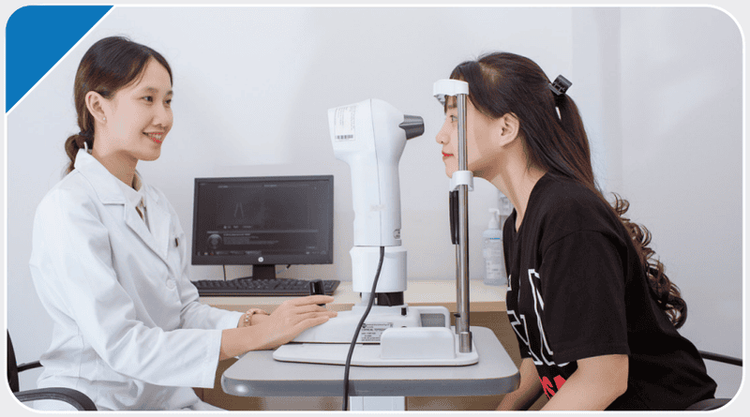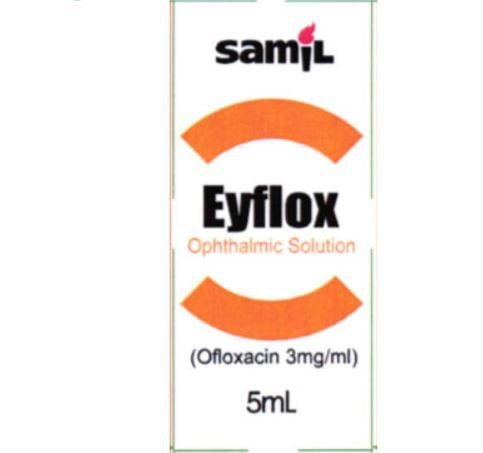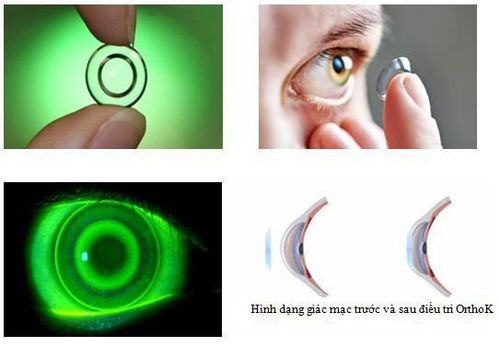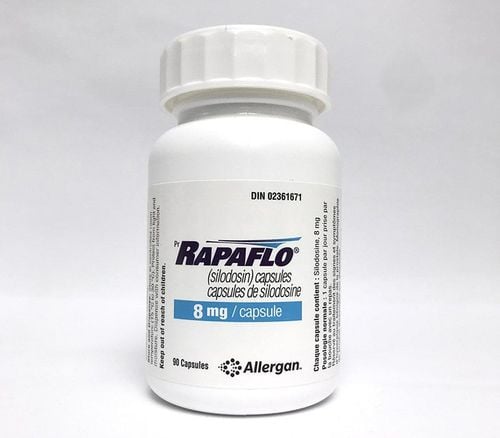This is an automatically translated article.
This article is professionally consulted by Master, Doctor Hoang Thanh Nga - Ophthalmologist - Department of Medical Examination and Internal Medicine - Vinmec Ha Long International General Hospital.Papilledema is a sign caused by many diseases, from which it is possible to detect brain tumors that do not cause obvious symptoms. In addition to the treatment of local papilledema, it is necessary to determine the cause of papilledema so that appropriate treatment methods are available.
1. What is papilledema?
The optic disc or disc is where the optic nerve enters the eyeball. When ophthalmoscopy shows that the normal optic disc is round or oval in shape, the average longitudinal diameter is about 1.85-1.95mm, the average horizontal diameter is 1.7-1.8mm. In the center behind the retina, away from the papilla toward the temple, there is a small hole with a large concentration of small pyramidal cells, which is the area that gives the best vision called the macula (macular).Papilledema is a condition in which the edge of the optic disc becomes swollen and blurred. The optic disc edema is the result of axonal outflow obstruction of the optic nerve, leading to axonal edema of the optic disc.
The causes of papilledema can be from the eyeball, the intracranial, from the orbit and the systemic causes such as:
● Causes from the eyeball: Sudden decrease in intraocular pressure due to penetrating trauma to the eyeball; Glaucoma in glaucoma (incorrect),...
● Orbital causes: Causes that put a lot of pressure on the optic nerve in the orbit can lead to papilledema such as orbital tumors eyes: sarcoma,...; orbital abscess; protrusion in basedow disease ...
● Intracranial causes: primary and metastatic intracranial tumors; narrow drain sylvius; subdural and epidural hematoma; subarachnoid hemorrhage; cerebral arteriovenous malformations; brain abscess; encephalitis,...
● Systemic causes such as hypertension, leukemia, pregnancy toxicity,...

Người mắc bệnh lý tăng huyết áp có thể là nguyên nhân gây phù gai thị
2. Diagnosis of papilledema
To diagnose papilledema, it is necessary to rely on clinical and laboratory symptoms. Clinical symptoms help guide the diagnosis and paraclinical measures help make an accurate diagnosis, helping to determine the cause of the disease.Symptoms of papilledema :
● There is a history of transient papilledema with manifestations such as: Temporary loss of vision in both eyes for a few seconds, headache, double vision, nausea, vomiting, rarely cause vision loss.
● If papilledema is chronic, there are signs of severe central vision and field loss.
● Eye exam shows:
Swollen and congested papillium, blurred papilla margins and occlusion of blood vessels.
Other signs: Retinal hemorrhage, varicose veins, white cotton dots, widening physiological blind spots.
If the papilledema is chronic, you will see papilledema, hemorrhage and white cotton spots disappear.
In addition, there are some other symptoms depending on the cause of the disease. Subclinical signs: Mainly help determine the cause of papilledema.
● Brain CT or MRI: Indicated in cases of suspected brain tumor or orbital tumor, brain hematoma, cerebral arteriovenous malformations...
● If not due to Cranial causes should be tested for other causes such as lumbar puncture to detect infection.
● Diagnosis due to causes of systemic diseases: Blood count, blood biochemistry,...

Xét nghiệm máu giúp bác sĩ xác định nguyên nhân gây phù gai thị
3. Methods of treating papilledema
Principles of treatment of papilledema: Solve circulatory disorders, nutrition at the optic nerve, anti-inflammatory and antibiotic if there is an infection. In addition, for thorough treatment, it is necessary to diagnose the cause of papilledema, from which, depending on each case, appropriate treatment measures should be taken.● Nutrition for nerves: supplement with B vitamins such as vitamins B1, B6, B12.
Vasodilators, enhance circulation.
● Anti-inflammatory: take steroid anti-inflammatory drugs. Corticosteroids are indicated in this case with high doses orally or by injection. Usually a combination of both oral and parenteral routes.
Treat the cause of papilledema
Control blood pressure if the cause is hypertension. Due to tumor compression: Surgery if possible, combined with chemotherapy, radiation therapy. Patients with a history of leukemia need immediate radiation therapy to preserve vision. Antibiotics : When the cause of the disease is an infection, it is necessary to prescribe the use of antibiotics to fight the infection. Depending on the causative agent of the infection, an appropriate antibiotic should be used. The treatment of papilledema is quite complicated because when the exact cause of the disease is known, the treatment results will be stable. Therefore, when there are symptoms of suspected papilledema, it is necessary to go to medical facilities for examination and treatment to avoid affecting vision and risking life due to the cause of papilledema. .

Người bệnh phù gai thị cần đến cơ sở y tế chuyên khoa để được bác sĩ thăm khám và điều trị
Refractive error screening package helps customers screen for refractive errors (strabismus, nearsightedness, farsightedness, astigmatism, amblyopia) through general and conventional eye exams. Monitor and manage periodically for 1 year for patients with refractive errors. The advantages of screening for refractive errors at Vinmec include:
Early and accurate detection of refractive errors Customers are consulted, examined and guided on comprehensive care to ensure eye health and vision improvement. The modern American Spot Vision Screener machine measures refractive errors for children aged 6 months and older, with high accuracy, proven by measuring the eyes of nearly 40,000 children in Vietnam - data as of October/October/ 2017. Assessment of visual function for children who cannot speak by modern equipment of international standards. A team of medical doctors, technicians with many years of experience, trained and trained in developed medical science countries in the world With 10 years of working in the field of Ophthalmology, used to work at Central Hospital Central Committee of Thai Nguyen and held the position of Deputy Head of Department and in charge of the Department of Ophthalmology, Thai Nguyen University of Medicine and Pharmacy. Master Hoang Thanh Nga has a lot of experience in the field of examination and treatment of eye diseases. Currently, he is an Ophthalmologist at the Department of General Internal Medicine, Vinmec Ha Long International General Hospital.
Please dial HOTLINE for more information or register for an appointment HERE. Download MyVinmec app to make appointments faster and to manage your bookings easily.
See more:
Can optic neuritis and corneal swelling at the same time be treated? Is optic nerve damage reversible? 6 tips to help increase your eyesight What is papilledema?













